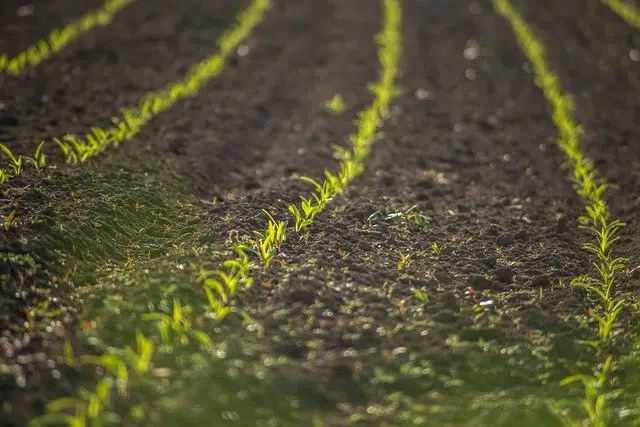
The idea of substrate can refer to the surface of a piece of land.
The substrate is a stratum that underlies another and on which it is able to exert some type of influence . The notion of stratum, on the other hand, refers to a layer or level of something, or to the set of elements that is integrated with other previous elements to form an entity.
For ecology , the substrate is the part of the biotope (area of uniform environmental conditions) where certain living beings develop their vital functions and relate to each other.
In biology , the concept of substrate is linked to the surface on which an animal or plant lives, which is made up of both biotic and abiotic factors.
The substrate as a chemical species
The substrate can also be a chemical species that is considered as the object of the action of one or more reagents; for example, a compound transformed by the action of a catalyst.
Biochemistry maintains that a substrate is a molecule on which an enzyme acts. In other words, enzymes are responsible for catalyzing chemical reactions that involve a substrate. The union between the enzyme and the substrate forms a complex.
The concept in linguistics
The linguistic substrate , finally, refers to the grammatical, lexical and phonetic influences that one language exerts on another. These influences are frequent when a town is conquered or invaded by another and the language originally spoken in that place influences the language that replaces it. The opposite phenomenon is called superstratum .
To understand the concept of linguistic substrate, the domination of the Romans over the Iberian Peninsula is usually cited, which resulted in the disappearance of the indigenous languages of the territory, except for Basque. Despite this, there are numerous characteristics that have remained as a substrate in Spanish; Some scholars believe that the Basque language's rejection of the pronunciation of the "f" was responsible for the disappearance of this initial of Latin origin, which underwent an evolution that led it to an "h" ( Formica became in ant ), initially aspirated and, finally, molting.

The concept of linguistic substrate refers to the influences of one language on another.
The linguistic substrate according to Romance philology
The diversity that the evolution of Latin presents in the regions of Latin Europe is very interesting, among which are present-day Spain, Italy, Romania, France and Portugal. To explain this phenomenon, Romance philology relies on the theory of the linguistic substrate, since all these territories had their own languages before the conquest, and they were all different from each other.
The theory says that when Latin was imposed as a second language, each people learned it using the phonetic and grammatical tools of their original language, generally different from the Latin ones, which is why part of it prevailed over the new one. While this is acceptable reasoning, it is incomplete, as not enough features of the original languages are found in their Latin versions.
Something similar happens with Spanish on the American continent, since there is no strong link between the aboriginal languages of America and the different forms that Spanish has taken on since the conquest. Often these are a few terms that their inhabitants have borrowed, rather than an important phonetic difference. Likewise, it is not possible to explain grammatical and syntactic differences based on this theory.
Once the technical issues of the original and the imposed language have been analyzed, and the influences of the former on the latter, with the consequent differences between the different territories conquered by the same nation, it is necessary to study the importance that each culture gives to its language, the needs they satisfy through its use, their way of thinking and feeling words and concepts.
